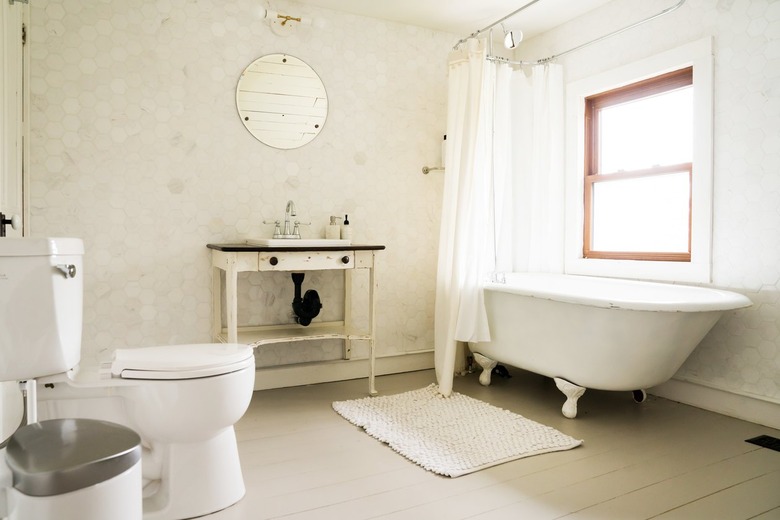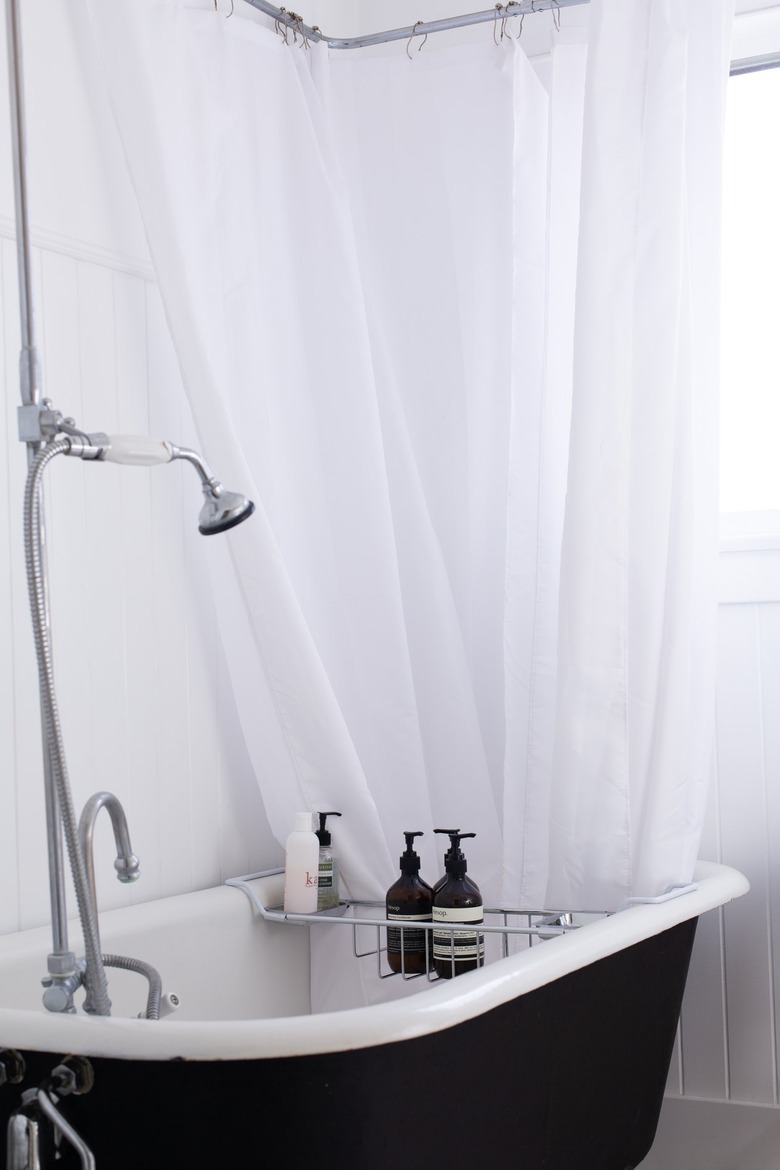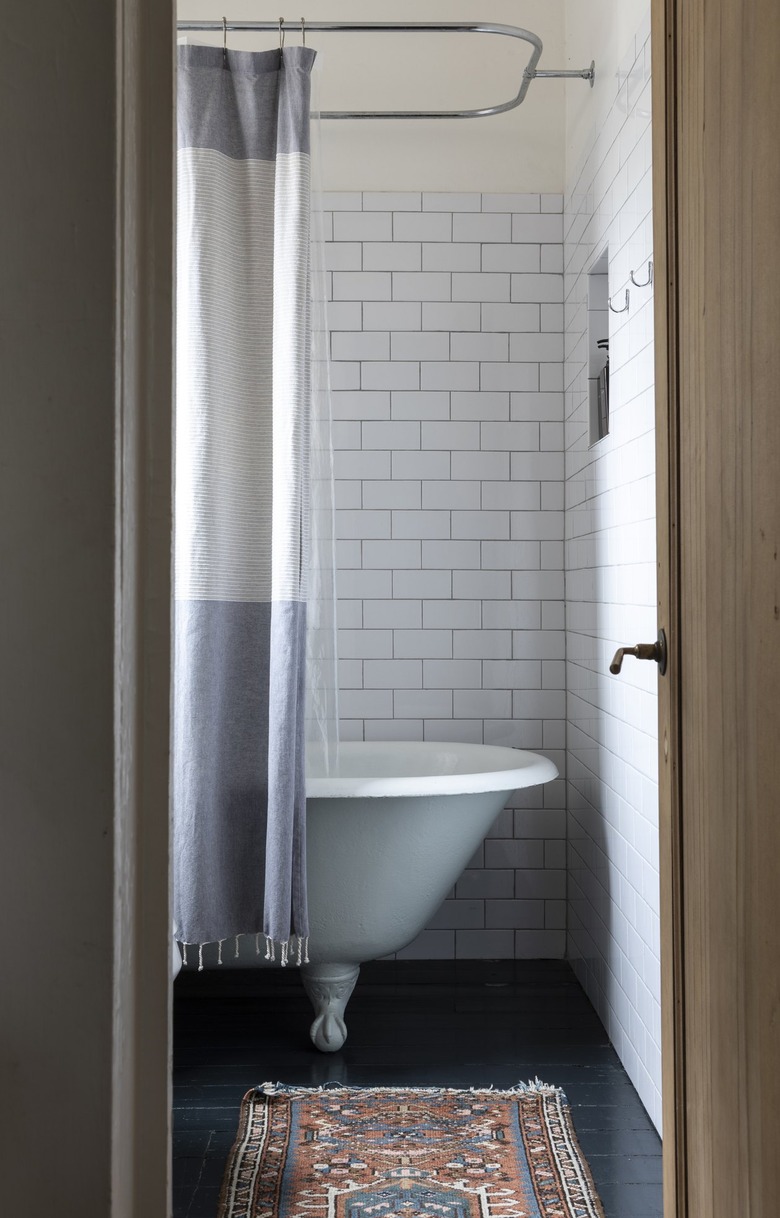Cast Iron Bathtubs: A Homeowner's Bathroom Guide
In terms of quality and performance, a cast iron bathtub is superior to virtually all other bathtub materials. When compared to the other popular materials for bathtubs — acrylic, fiberglass and enameled steel — a cast iron bathtub is more durable, easier to clean and better at holding heat. Porcelain-enamel cast iron bathtubs are among the most attractive and elegant of all tubs.
These advantages come at a price since cast iron bathtubs are typically more expensive and are harder to install than bathtubs made of other materials. A comparison with those other materials will tell you if a cast iron bathtub is right for you.
How Cast Iron Bathtubs Are Made
How Cast Iron Bathtubs Are Made
The creation of a cast iron bathtub begins with molten iron poured into a casting mold to create the basic shape of the bathtub. While the iron is still hot, the core is sprayed with a layer of powdered glass, which liquefies into a porcelain surface coating. A second coating of powdered glass is immediately sprayed onto the surface, melting into the first layer. This step is repeated yet again, producing a uniquely strong enameled porcelain finish.
The elaborate process produces a bathtub with a surface coating that is much thicker than the enamel on a steel tub and much stronger and more durable than acrylic or fiberglass bathtubs. A cast iron tub might also receive decorative touches, such as claw feet. The effort involved in creating these tubs is one reason they are more expensive.
Cast Iron Bathtub Installation Styles
Cast Iron Bathtub Installation Styles
Cast iron bathtubs come in the same basic installation styles as other popular tub materials, including:
- Standard alcove bathtubs with a finished front apron that slide into a framed alcove.
- Drop-in, deck-mounted tubs that are lowered into an opening in a framed deck or platform, often finished with ceramic or stone tile for a top-end luxury look.
Both alcove and drop-in cast iron tubs are available in whirlpool or air-jet variations. In addition, unlike other materials, cast iron is used for unique, freestanding bathtub styles with roll-top rims, such as:
- Pedestal tubs that are finished on all sides and stand alone in the bathroom.
- Classic clawfoot tubs that stand on decorative legs rather than a pedestal-like base.
- Slipper tubs — a pedestal/clawfoot variation that has one or two curved ends, designed for leisurely bathing.
The availability of pedestal, clawfoot and slipper styles is one of the main selling points of cast iron as a bathtub material. Many of the major fixture manufacturers, including American Standard, Toto and Kohler, make modern reproductions of these classic vintage styles. These fixtures are so popular that there is also a booming market for repurposed vintage clawfoot and pedestal tubs.
Cast Iron Bathtub Size and Weight
Cast Iron Bathtub Size and Weight
Cast iron bathtubs come in the same wide range of sizes as bathtubs made from other materials. The smallest alcove tubs begin at about 30 inches wide and 54 inches long, with the largest running as much as 36 inches wide and 66 inches long. In clawfoot and slipper styles, sizes range from about 30 x 60 inches to about 42 x 72 inches. Specialty bath stores may offer smaller and larger sizes by special order, but large two-person tubs are very uncommon for cast iron tubs since the enormous weight makes them prohibitive to install.
The heavy weight is the single biggest factor (maybe the only factor) that discourages people from buying cast iron tubs. Even the smallest alcove-style cast iron tub can weigh 300 pounds or more when dry. The largest clawfoot tubs can weigh well over 500 pounds when dry and more than 1,000 pounds when filled with water. In some cases, structural reinforcement of floors may be necessary if you want to install a large cast iron bathtub.
If you compare this weight to a comparable acrylic bathtub or fiberglass bathtub, which can weigh as little as 50 pounds and rarely more than 120 pounds for the very largest drop-in tubs, it's easy to understand why synthetic materials are now more popular than cast iron.
Cast Iron Bathtub Colors and Costs
Cast Iron Bathtub Colors and Costs
Like most tubs made from synthetic materials, cast iron tubs are widely manufactured in various shades of white, off white, beige and buff/sand tones. You can also find cast iron tubs in black, red or other colors, though you may need to shop in specialty bath stores and be prepared to pay more for unusual colors.
The cast iron bathtubs available at major home improvement centers start at about $400 for the smallest sizes, but the selection is quite limited until you reach the $800 to $2,000 range. New clawfoot/slipper styles start at about $2,000 but can easily cost up to $5,000 or more, especially if you want colors outside the standard options. These prices make cast iron bathtubs the most expensive among the popular materials for bathtubs. By comparison to cast iron's $800 to $5,000 range:
- Fiberglass bathtubs start at $300 but rarely run more than $500.
- Enameled steel bathtubs start at about $300, running up to perhaps $2,000.
- Acrylic bathtubs start at about $500, with most models remaining under $1,200.
Maintaining a Cast Iron Bathtub
Maintaining a Cast Iron Bathtub
The enameled porcelain surface on a cast iron tub is one of the most durable finishes of all bathtub materials, and it is easier to clean than many materials. Light scrubbing with a gentle soapy solution and a nonabrasive nylon pad may be all that's required if you are diligent about cleaning weekly. Because the enamel surface is somewhat susceptible to scratches, avoid using abrasive cleansers or scrub pads.
If the surface is neglected and becomes stained, the National Association of Realtors recommends making a paste from baking soda and warm water, applying it to the stain and allowing it to sit for about 30 minutes before scrubbing with a cleaning towel and rinsing with warm water. For tougher stains, a teaspoon of trisodium phosphate mixed with hot water makes a good scrubbing solution.
Finding and Restoring a Vintage Bathtub
Finding and Restoring a Vintage Bathtub
The market for vintage cast iron bathtubs is a steady one, and you can find them offered at many of the same sources where other vintage home furnishings are sold: antique dealers and secondhand stores, reuse building supply centers and online forums. The appeal of a vintage tub is twofold: to save money and to own a unique antique fixture.
Costs for a vintage cast iron tub can range from a few dollars to several thousand dollars, but most standard vintage clawfoot tubs in serviceable condition will cost between $150 and $500, which can be vastly less than what a new tub costs. Never buy a cast iron tub sight unseen. Inspect the condition of the porcelain surface. Deep chips that have penetrated to the cast iron core may be approaching the rust-through stage.
Also, check the condition of the feet on a vintage clawfoot tub. If they need to be repaired or replaced, you run the risk of having a tub that will be unstable to use. Finding the proper replacement feet for an antique tub is no easy matter, and remember that a vintage tub is very large, heavy and awkward to move.
An old pitted cast iron bathtub — whether it's the one you already have or a vintage find — can be refinished by hiring a company to spray-coat an acrylic urethane resin coating on the surfaces. This process typically costs $350 to $500, but it is considerably cheaper than the $1,200 to $5,000 that it costs to have a new clawfoot tub installed. There are also consumer DIY refinishing kits available, but the results are usually not very good, especially when you are trying to restore a classic tub where looks are critical.
DIY Considerations for Cast Iron Bathtubs
DIY Considerations for Cast Iron Bathtubs
Despite the many advantages of a cast iron bathtub, DIYers will want to think twice before buying one. Moving a 300- to 500-pound tub into the bathroom and positioning it can be very difficult. When you consider what it takes to move a large cast iron clawfoot tub up a flight of stairs, through a narrow doorway and into position in a bathroom alcove, you may become convinced that a modern 70-pound acrylic bathtub makes more sense.
In the best of circumstances, it's good to have two or three helpers on hand to help you move and position a cast iron tub. Also, give thought to the floor structure in your bathroom. If the floor joists are substantial in size and in good shape, they can probably tolerate the extra 500 to 1,200 pounds that is added by a large clawfoot bathtub full of water. However, a bathroom with floor joists that are undersized or saggy may require some structural reinforcement before you install the tub.
Cast iron tubs are available to match a variety of plumbing configurations, including center, left-hand and right-hand drains and faucets.
Pros and Cons of Cast Iron Bathtubs
Pros and Cons of Cast Iron Bathtubs
In the final measure, a cast iron bathtub is an excellent choice if the relatively high cost and heavy weight are not a problem. This is a material for which the pros greatly outweigh the cons.
|
Pros |
Cons |
|
|
|
|
|
|
|
|
|
|
|
|
|
|
|
|
|
References
- Badeloft: Cast Iron Bathtub Guide: What You Should Know Before You Buy
- Quality Bath: Cast Iron Tubs: Everything You Need to Know
- Freshome: What's Trending in Bathroom Design? The National Kitchen + Bath Association Reveals All
- Fine Homebuilding: Bathtub Buyer's Guide
- Badeloft: Common Bathtub Materials — Pros and Cons
- Kingston Kitchen & Bath: How a Cast Iron Bathtub Is Made
- National Association of Realtors: The Ultimate Guide to Cleaning a Bathtub (Based on the Type of Tub)


